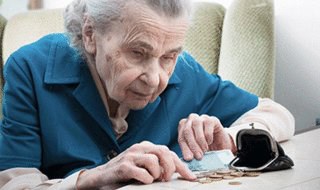A B.C. Seniors’ Poverty Report Card released this week by the Social Planning and Research Council of British Columbia (SPARC) and United Way of the Lower Mainland says the province has the highest rate of poverty for people over 65 in the country.
The study, based on 2015 data from Statistics Canada and information from other federal and provincial agencies, shows 8.8 per cent of B.C. seniors are living below the poverty line – more than double the number from 2000.
The Canadian average is 6.6 per cent.
The poverty line, called the Low Income Measure After Tax (LIM) by Statistics Canada, is $22,133 for a single person and $31,301 for a two-person household.
The report says single seniors are more than three times as likely to be poor than seniors living together. Sixteen per cent of single seniors in B.C. live in poverty while 4.9 per cent of seniors in coupled families are below the LIM.
The Sunshine Coast is doing better than both the provincial and national averages.
The report shows 4.2 per cent of the 2,160 seniors in Gibsons are below the poverty line and 3.5 per cent of the 3,410 people over 65 in Sechelt are in the same position.
In the rural areas, only Roberts Creek and Halfmoon Bay had a large enough seniors population to be included in the study. The poverty rate for seniors in Roberts Creek was 4.5 per cent and three per cent in Halfmoon Bay.
According to the report, the housing crisis is also hitting the older demographic hard. It found that 18.8 per cent of seniors in B.C. reported housing affordability challenges in 2016 – the third highest incidence of housing affordability challenges in the country.
In its most recent Vital Signs study, the Sunshine Coast Community Foundation pointed to seniors as one of the vulnerable populations on the Coast.
The Vital Signs study said in 2016, 36 per cent of Sunshine Coast residents 75 or older lived on their own, and that number rose to 46 per cent for those 85 or older. It also found that seniors made up a large number of the clients at the homeless shelter.
“The B.C. Seniors’ Poverty Report Card provides compelling evidence that seniors’ poverty is a growing challenge across our province,” said Scott Graham of SPARC in a release that accompanied the study. “It provides clear evidence that specific poverty reduction strategies for seniors are necessary.”



